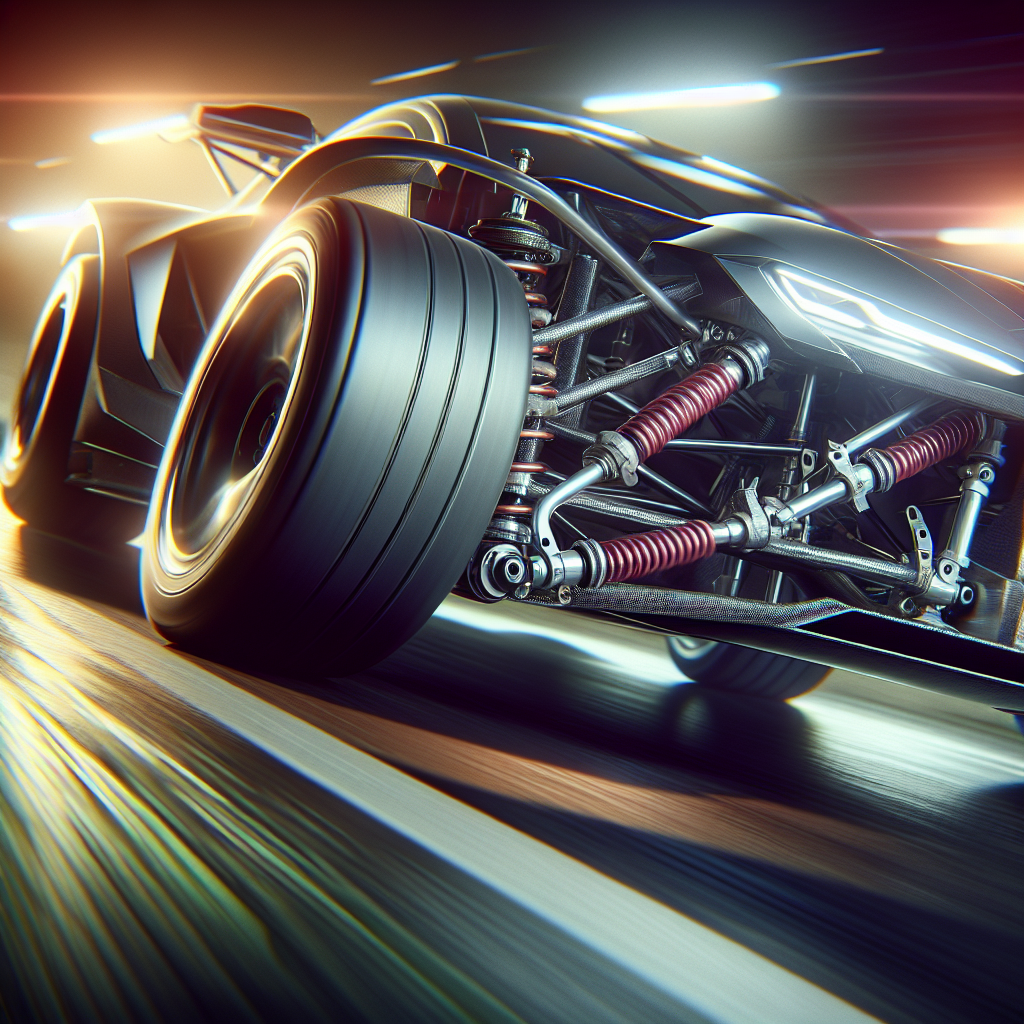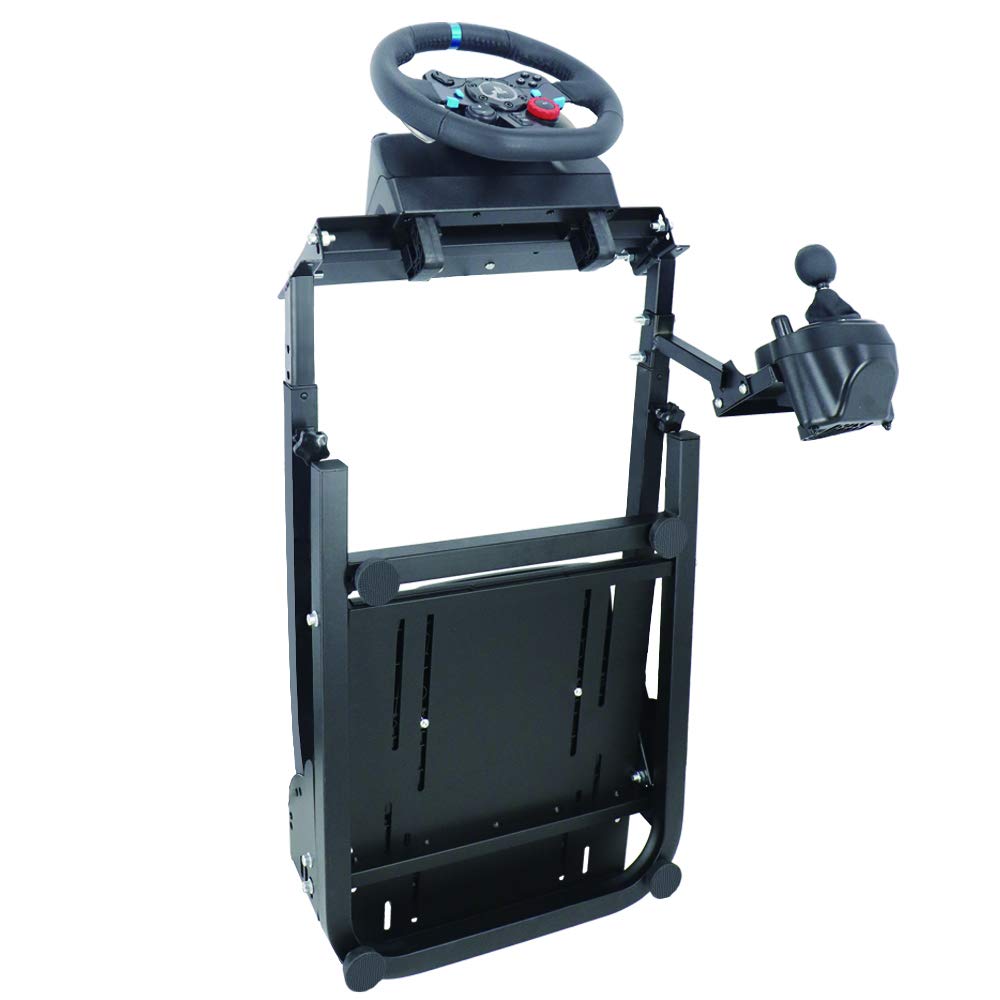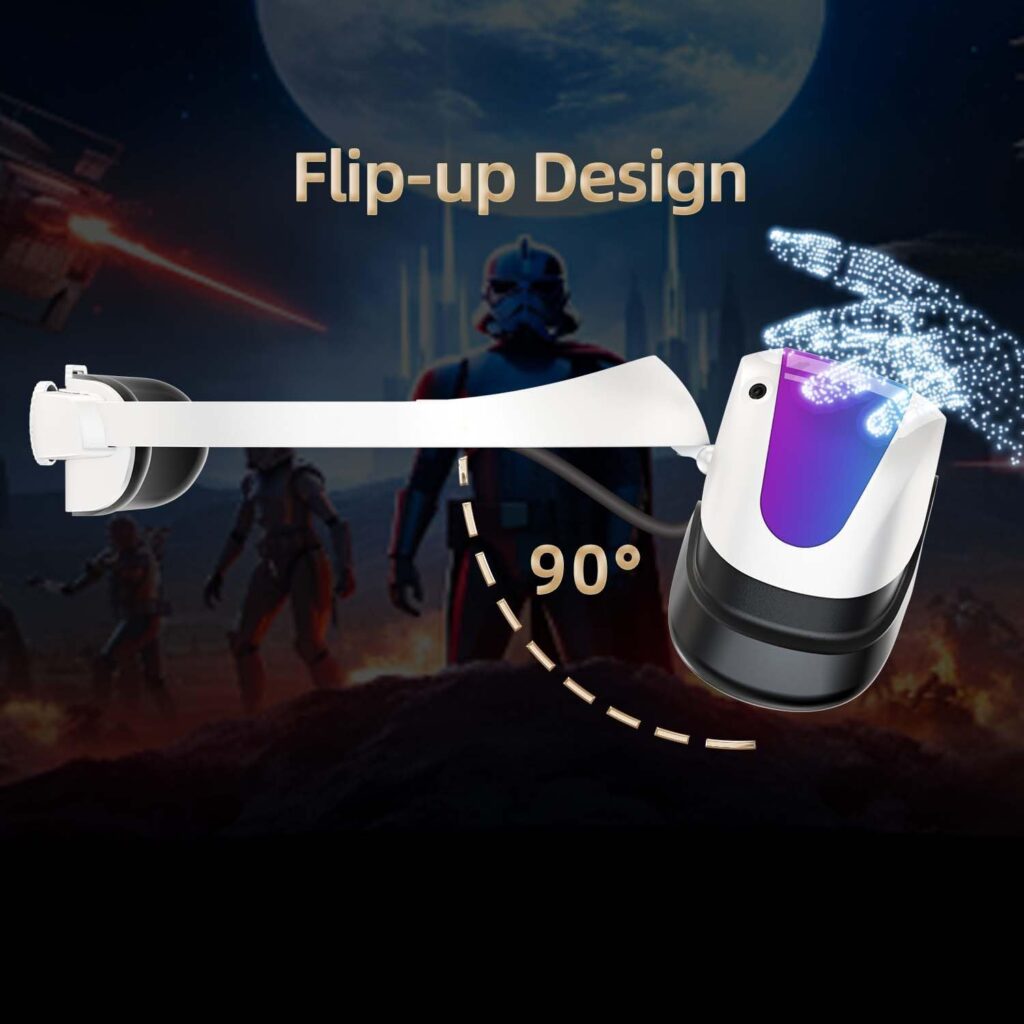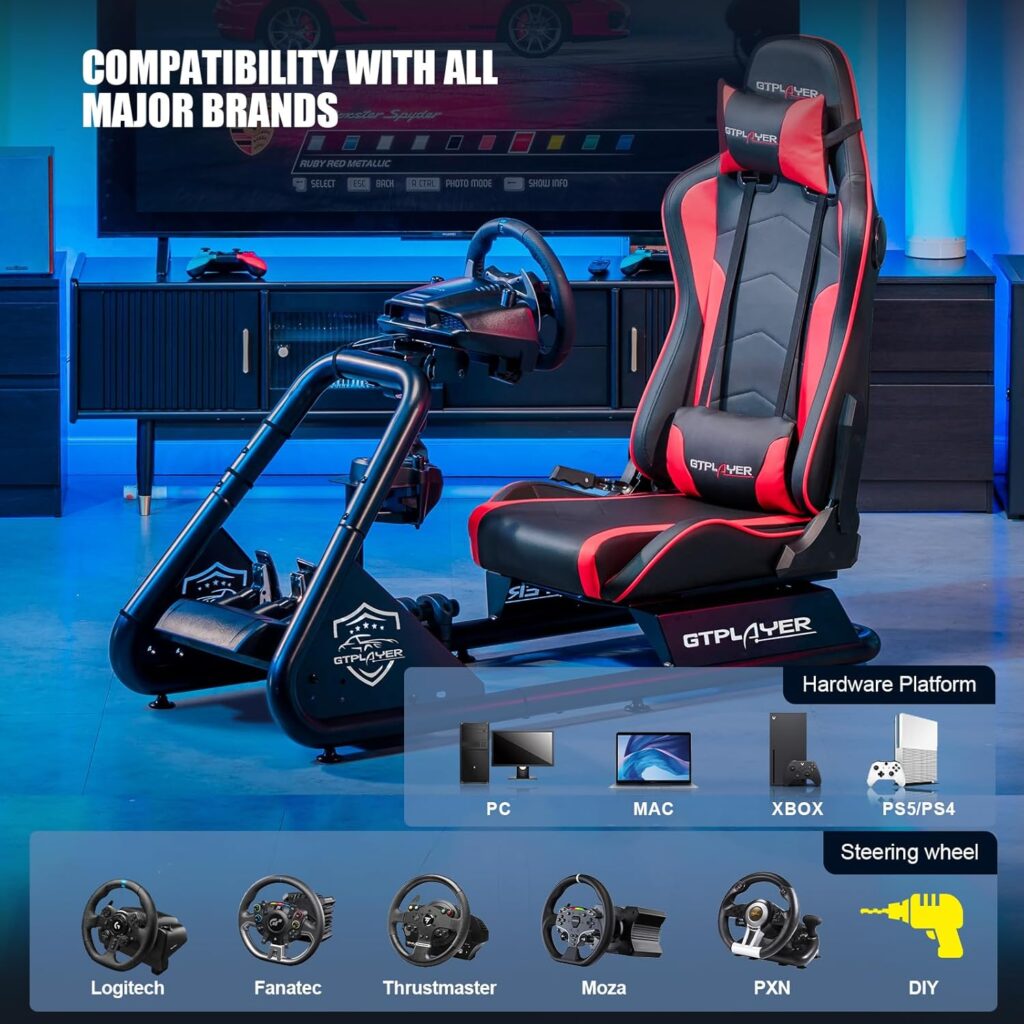In the world of sim racing, suspension geometry plays a crucial role in determining the overall performance and handling of your virtual race car. It’s not just about the flashy graphics or the realistic sound effects; the way your car’s suspension is set up can greatly impact your racing experience. From the type of racing line you take to the responsiveness of your vehicle, suspension geometry influences it all. So, buckle up and get ready to explore the fascinating world of how suspension geometry shapes your sim racing adventures.
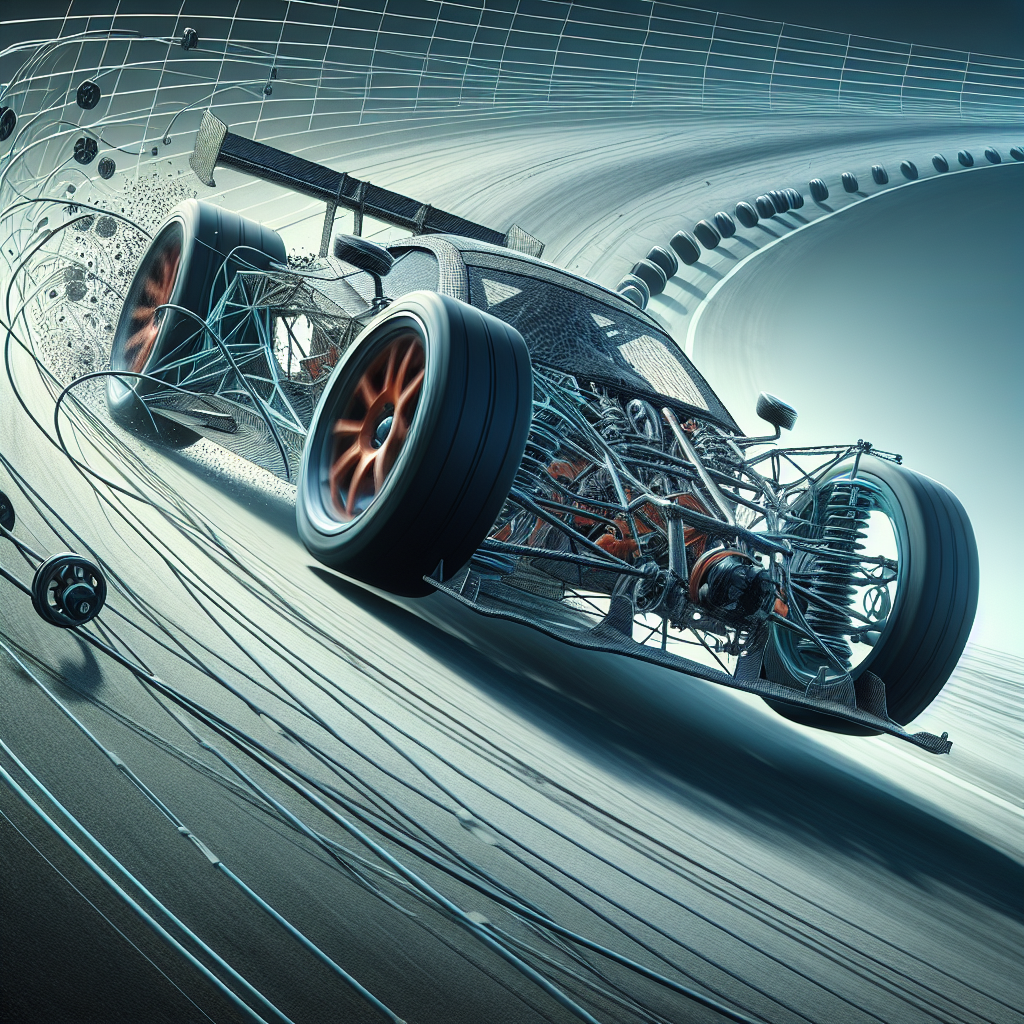
What is Suspension Geometry?
Definition
Suspension geometry refers to the arrangement and alignment of various components in a vehicle’s suspension system. It plays a crucial role in how the vehicle handles, steers, and maintains traction on the road. In sim racing, where the virtual environment mirrors real-world physics, suspension geometry affects the virtual car’s performance and handling characteristics.
Components of Suspension Geometry
Suspension geometry involves several key components, including camber, caster, toe, ride height, spring rates, and anti-roll bars. Each of these components influences different aspects of the vehicle’s handling and can be adjusted to customize the suspension setup in sim racing.
Importance in Sim Racing
In sim racing, suspension geometry is of paramount importance as it directly affects how your virtual car responds to steering inputs, corners, and transfers weight during various maneuvers. Understanding and correctly adjusting suspension geometry can significantly improve your lap times, overall handling, and the overall driving experience.
Effects of Suspension Geometry on Handling
Steering and Handling Responsiveness
The suspension geometry plays a crucial role in determining the steering and handling responsiveness of the virtual car. Factors such as caster and toe alignment significantly impact how quickly and accurately the car responds to steering inputs. Properly adjusted suspension geometry ensures that the virtual car reacts promptly and predictably, allowing you to navigate corners and change directions smoothly.
Tire Contact and Grip
Suspension geometry also affects the way your virtual car’s tires make contact with the virtual road surface. Proper camber alignment plays a significant role here. By adjusting camber angles, you can optimize the contact patch of the tires, promoting even tire wear and maximizing grip during cornering and acceleration.
Weight Transfer
During acceleration, braking, and cornering, weight is transferred between the front and rear axles of the virtual car. Suspension geometry plays a crucial role in controlling and managing this weight transfer. Properly adjusted suspension geometry helps maintain the virtual car’s balance and stability, minimizing unwanted weight shifts and ensuring optimal traction.
Cornering Stability
Suspension geometry influences the cornering stability of your virtual car. Factors such as camber, caster, and anti-roll bar settings directly impact the car’s ability to maintain grip and stability during cornering. Correctly setting these variables ensures that the virtual car remains composed and predictable, allowing you to take corners at higher speeds without sacrificing control.
Suspension Setup Customization
The adjustability of suspension geometry parameters in sim racing allows you to customize the setup of your virtual car to suit your driving style and track conditions. By fine-tuning suspension geometry, you can optimize the performance of your virtual car, reducing understeer or oversteer tendencies and achieving a well-balanced setup for different race scenarios.
Key Parameters in Suspension Geometry
Camber
Camber refers to the angle at which the wheels of a vehicle tilt inward or outward when viewed from the front. It is a critical parameter in suspension geometry as it directly impacts tire contact patch and grip. Negative camber, where the top of the wheel leans inward, improves cornering grip, but excessive negative camber can cause uneven tire wear.
Caster
Caster refers to the angle at which the steering axis is tilted backward or forward when viewed from the side of the vehicle. It affects the stability and self-centering ability of the steering system. A higher caster angle provides better straight-line stability but may result in heavier steering.
Toe
Toe refers to the angle at which the wheels are turned inward or outward when viewed from above. It affects tire wear, handling responsiveness, and stability. Toe-in means the wheels point inward, promoting stability, while toe-out enhances the car’s responsiveness at the expense of stability.
Ride Height
Ride height refers to the vertical distance between the ground and the vehicle’s chassis. It affects aerodynamics, center of gravity, and suspension travel. Setting the ride height properly ensures optimal aerodynamic performance and balanced weight distribution, maximizing overall handling.
Spring Rates
Spring rates determine the stiffness or softness of the suspension springs. They directly influence the ride comfort, weight transfer, and handling characteristics of the virtual car. Softer springs provide a more comfortable ride but may compromise cornering performance, while stiffer springs improve responsiveness but can result in a harsher ride.
Anti-Roll Bars
Anti-roll bars, also known as sway bars or stabilizer bars, connect the left and right suspension components across the vehicle’s chassis. They resist the body roll during cornering and help maintain stability. Adjusting the thickness or stiffness of the anti-roll bars allows you to fine-tune the handling characteristics of your virtual car.
Camber and Its Impact
Definition and Measurement
Camber refers to the angle at which the wheels deviate from the vertical axis. It is measured in degrees and can be positive, zero, or negative. Positive camber occurs when the top of the wheel leans outward, negative camber when it leans inward, and zero camber when the wheel is perpendicular to the ground.
Effects on Tire Wear
Camber angle directly affects how the tires make contact with the road surface. Excessive negative camber can cause the tire’s outer edges to wear prematurely, reducing overall tire life. On the other hand, positive camber can cause excessive wear on the inner edges. Optimal camber settings distribute tire wear evenly across the tread, maximizing their lifespan.
Effects on Grip and Cornering
Camber has a significant impact on the tire’s contact patch and grip during cornering. Negative camber increases the contact patch on the inside edge of the tire, improving cornering grip. This allows the tire to maintain better traction and stability during high-speed turns. However, excessive negative camber can diminish straight-line grip and tire stability.
Optimal Camber Values for Sim Racing
The optimal camber values for sim racing depend on various factors such as the type of tires, track conditions, and personal preference. As a general guideline, starting with a slightly negative camber angle for the front wheels can improve cornering grip without sacrificing straight-line stability. Experimenting with different camber angles and monitoring tire wear patterns can help you find the optimal camber values for your virtual car.

This image is property of images.pexels.com.
Caster and Its Influence
Definition and Function
Caster refers to the angle formed by the steering axis in relation to the vertical axis when viewed from the side of the vehicle. It determines the self-centering ability of the steering system and affects the vehicle’s straight-line stability. Positive caster angles lean the steering axis backward, while negative caster angles lean it forward.
Effects on Steering and Stability
Caster angle influences the steering and stability of the virtual car. Higher caster angles enhance straight-line stability by providing a self-centering effect. This means the wheels naturally align themselves to the straight-ahead position after a turn, improving stability and reducing the effort needed for steering inputs. However, higher caster angles can also make the steering feel heavier.
Optimal Caster Values for Sim Racing
Determining the optimal caster values for your virtual car largely depends on factors such as the type of vehicle, track characteristics, and personal preference. In most cases, a moderate positive caster angle delivers a balance between straight-line stability and steering feel. It is advisable to start with a slightly positive caster angle and make adjustments based on your driving style and desired handling characteristics.
Toe and Its Significance
Definition and Adjustment
Toe refers to the angle formed between the longitudinal axis of the vehicle and the direction the wheels are pointing when viewed from above. It influences the handling responsiveness, stability, and tire wear. Toe can be adjusted by aligning the wheels to point slightly inward (toe-in) or outward (toe-out).
Effects on Tire Wear and Stability
Improper toe alignment can significantly affect tire wear and stability. Excessive toe-in or toe-out can cause accelerated tire wear on the inner or outer edges. It can also negatively impact stability and how the virtual car handles. Optimal toe settings ensure even tire wear and promote stability during acceleration, braking, and cornering.
Toe-In vs. Toe-Out
Toe-in means the wheels are angled slightly inward, where the front edges of the tires are closer together than the rear. This setup enhances stability and straight-line tracking but can sacrifice some responsiveness. Toe-out, on the other hand, angles the wheels slightly outward, where the front edges are farther apart than the rear. This configuration improves responsiveness but can reduce stability.
Optimal Toe Values for Sim Racing
The ideal toe values for sim racing depend on various factors, including vehicle type, track conditions, and personal preference. As a starting point, a slight toe-in configuration for the front wheels provides stability and predictable handling. Fine-tuning the toe values based on the specific characteristics of the virtual car and track can help optimize performance and responsiveness.

This image is property of images.pexels.com.
Ride Height and Its Role
Definition and Adjustment
Ride height refers to the vertical distance between the ground and the vehicle’s chassis. It can be adjusted by changing the springs, shocks, or suspension components. Proper ride height adjustment is essential for optimizing aerodynamics, maintaining an ideal center of gravity, and maximizing suspension travel.
Effects on Aerodynamics
The ride height has a significant impact on the aerodynamic performance of the virtual car. Lowering the ride height reduces the amount of air flowing underneath the vehicle, minimizing aerodynamic drag and improving stability at high speeds. However, excessively low ride heights can negatively affect the car’s ability to handle bumps or uneven surfaces.
Impact on Center of Gravity
The ride height also affects the virtual car’s center of gravity. Lowering the ride height lowers the center of gravity, improving stability and reducing body roll during cornering. A lower center of gravity enhances overall handling and increases the car’s resistance to tipping over. However, too low of a ride height can lead to excessive bottoming out or ground clearance issues.
Optimal Ride Height for Sim Racing
Determining the optimal ride height for your virtual car involves a balance between aerodynamics and suspension travel. It is important to consider the track characteristics, driving conditions, and suspension setup. Experimenting with different ride heights while monitoring the car’s behavior and lap times can help you find the optimal ride height for your sim racing endeavors.
Spring Rates and Their Impact
Definition and Importance
Spring rates refer to the stiffness or softness of the suspension springs. They determine how the virtual car responds to bumps, weight transfer, and cornering forces. The springs act as the primary support for the weight of the vehicle and resist compression and rebound movements.
Effects on Ride Comfort
Spring rates have a direct impact on the ride comfort of the virtual car. Softer springs absorb bumps and irregularities in the road surface, providing a smoother ride. Higher spring rates, on the other hand, offer better responsiveness and control, but at the cost of ride comfort. Balancing the spring rates to suit your driving style and track conditions is crucial for optimizing both performance and comfort.
Implications on Cornering
The choice of spring rates significantly affects how the virtual car handles during cornering. Stiffer springs reduce body roll and maintain stability, allowing for sharper and more precise turn-ins. Softer springs, on the other hand, improve grip by keeping the tires in better contact with the road surface. Finding the right balance of spring rates is essential to achieving optimal cornering performance.
Optimal Spring Rates for Sim Racing
The optimal spring rates for sim racing depend on various factors, including the vehicle type, track conditions, and personal preference. Starting with moderate spring rates provides a good baseline to assess the characteristics of the virtual car. Fine-tuning the spring rates based on its handling behavior and lap times can help achieve the desired balance between responsiveness and stability.

This image is property of images.pexels.com.
Anti-Roll Bars and Their Influence
Definition and Function
Anti-roll bars, often referred to as sway bars or stabilizer bars, are components that connect the left and right suspension components across the vehicle’s chassis. They resist the body roll or sway that occurs during cornering, improving stability and reducing the overall load transfer.
Effects on Body Roll
Anti-roll bars play a crucial role in minimizing body roll or lateral weight transfer during cornering. They distribute the load between the left and right wheels, helping to keep the virtual car level and balanced. This reduces the tendency for the vehicle to roll excessively, maintaining better tire contact and ensuring consistent grip.
Impact on Cornering
Properly adjusted anti-roll bars greatly influence the cornering performance of the virtual car. Stiffer anti-roll bars reduce body roll and promote sharper turn-ins, providing better cornering response. On the other hand, softer anti-roll bars allow more independent movement of each wheel, increasing overall grip. Balancing the stiffness of the anti-roll bars is important in achieving the desired level of control and stability during corners.
Optimal Anti-Roll Bar Settings for Sim Racing
Determining the optimal anti-roll bar settings for sim racing requires considering the vehicle dynamics, track conditions, and personal preferences. As a starting point, setting the anti-roll bars to a moderate stiffness allows you to assess the virtual car’s behavior during different maneuvers. Making adjustments based on body roll, tire grip, and overall balance will help you find the optimal anti-roll bar settings for your sim racing experience.
Ensuring a Balanced Suspension Setup
Considering Overall Vehicle Balance
Achieving a balanced suspension setup involves considering the overall vehicle balance. It is important to distribute weight effectively between the front and rear axles to optimize traction and handling. Proper suspension geometry adjustments, along with other setup parameters such as weight distribution and tire pressure, contribute to achieving a balanced setup.
Addressing Understeer and Oversteer
Understeer and oversteer are two common handling imbalances that need to be addressed in a balanced suspension setup. Understeer refers to a condition where the front wheels lose grip before the rear wheels during a turn, causing the car to push wide. Oversteer, on the other hand, occurs when the rear wheels lose grip before the front wheels, causing the rear end of the car to slide out. Adjusting the suspension geometry variables, such as camber, toe, and anti-roll bar settings, can help mitigate these imbalances.
Adjusting Suspension Geometry Accordingly
To achieve a balanced suspension setup, it is important to make adjustments to the suspension geometry parameters based on the desired handling characteristics and track conditions. Fine-tuning variables such as camber, caster, toe, ride height, spring rates, and anti-roll bar settings allow you to optimize the performance and handling of your virtual car. Regular testing and monitoring of the car’s behavior during different scenarios will help you refine and achieve the ideal suspension geometry setup in sim racing.
In conclusion, suspension geometry plays a pivotal role in the performance and handling characteristics of a virtual car in sim racing. By understanding the various components of suspension geometry and their effects, sim racers can make informed adjustments to optimize their virtual car’s handling, responsiveness, and overall driving experience. Whether it’s fine-tuning camber angles for optimal tire grip or adjusting anti-roll bar settings to ensure stability during cornering, attention to suspension geometry is vital in achieving success in the world of sim racing.
